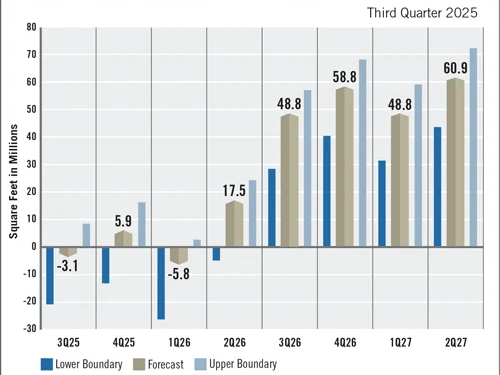Re-evaluating Risk: Do New Proposals Adequately Address the Role of the B-Piece Buyer?
On March 29, 2011, banking regulators and the Securities and Exchange Commission jointly issued proposed regulations regarding mandatory “risk retention” applicable to future CMBS issuances.
By Michael Hamilton, Partner, DLA Piper L.L.P.
On March 29, 2011, banking regulators and the Securities and Exchange Commission jointly issued proposed regulations regarding mandatory “risk retention” applicable to future CMBS issuances.
The agencies were required to propose such regulations under the Dodd-Frank Wall Street Reform and Consumer Protection Act. In general, Dodd-Frank requires a “securitizer” (for simplicity here, the loan originator) to retain not less than 5 percent of the credit risk of assets that it securitizes. The policy is intended to promote better underwriting of securitized assets. Dodd-Frank did not apply the 5 percent rule uniformly. Rather, it recognized that CMBS already has its own risk retention mechanisms, such that less strict or alternative requirements may be appropriate.
The recently proposed regulations afford flexibility by exempting certain types of CMBS loans and/or allowing alternative CMBS risk retention practices. Under the proposed regulations, the most notable exception to the 5 percent rule is for qualified commercial real estate loans, or QCREs. The requirements for these loans include (in part) the following:
■ The loan must be secured by a first lien on real estate;
■ The originator must have verified and documented the financial condition of the borrower, based in part on actual cash flow from tenants under triple-net leases that are not in default under their leases (or month-to-month tenants with three years of prior occupancy);
■ The loan must amortize over 20 years or less;
■ The borrower’s financial statements, inclusive of the liabilities for the subject loan, must show a debt service coverage ratio over a two-year forward period of 1.5 to 1.7 or greater;
■ The loan-to-value ratio must be less than or equal to 60 to 65 percent;
■ The loan must have a term of at least 10 years; and
■ It must be fixed or hedged floating rate.
The QCRE requirements are intended to ensure that the underlying loans are very low risk. If a loan qualifies as such, then the risk retention requirement is reduced to zero percent.
Dodd-Frank and the proposed rules also contemplate that CMBS risk retention may be satisfied by a third party who specifically negotiates for and purchases a first-loss position in the debt stack. To date, in CMBS, this has been the role of the B-piece buyer, and the proposed regulations show great deference to this existing practice. The regulations, however, include certain new requirements in this context:
■ The B-piece buyer must pay cash for its interest without financing from any other party related to the securitization;
■ The B-piece buyer must perform a review of the credit risk of each asset in the pool and the originator/sponsor must certify to investors the experience of the B-piece buyer;
■ The B-piece buyer may be affiliated with the originator only if the originator contributes less than 10 percent of the principal balance of the assets in the pool, and may not be affiliated with any other party related to the securitization;
■ The B-piece buyer may not have control rights in the securitization that are not shared by all other investors (including as servicer or special servicer, a role it has historically retained), unless an independent “operating advisor” is appointed to protect the interests of all investors. Regulators are focused on perceived conflicts of interest. The operating advisor must be consulted with respect to major decisions, including decisions regarding loan workouts and foreclosures. The operating advisor will also have the right to recommend that the affiliated servicer be replaced;
■ The CMBS sponsor will be required to disclose certain information about the B-piece buyer to the investors and to make certain representations and warranties about the underlying assets, specifying any exceptions and outlining the factors that justified the asset’s inclusion in the pool; and
■ The B-piece buyer may not hedge its risk to effectively sidestep the mandated risk retention requirements.
Since Dodd-Frank was passed and in response to these proposed rules, industry participants have expressed concern about the need for and potential impacts of the 5 percent rule. The 5 percent rule is expected to increase the costs of origination and result in less underwriting flexibility and greater emphasis on “formalizing” the underwriting requirements of CMBS (already widely considered to be very inflexible and form driven). The utility of the exemption for QCRE loans is questionable, because few loans will likely qualify under the regulatory tests. There is also substantial debate about whether an operating advisor will solve the conflicts of interest in the system. They could arguably be solved by market-driven contracts, rather than new regulations.
In short, industry participants remain skeptical. Over the coming weeks, the agencies will collect comments on the proposed rules. The deadline for comments is June 10, 2011. Comments
may be submitted in accordance with the guidelines found at: https://www.sec.gov/rules/proposed/2011/34-64148.pdf. The final rules will be effective in 2013.
Michael Hamilton is a partner in the Los Angeles office of DLA Piper L.L.P. (US) and focuses his practice on business transactions, with a particular emphasis on finance and real estate matters.
This article originally appeared in the May 2011 issue of CPE.








You must be logged in to post a comment.